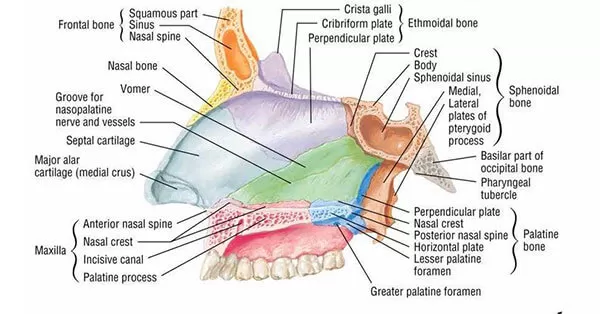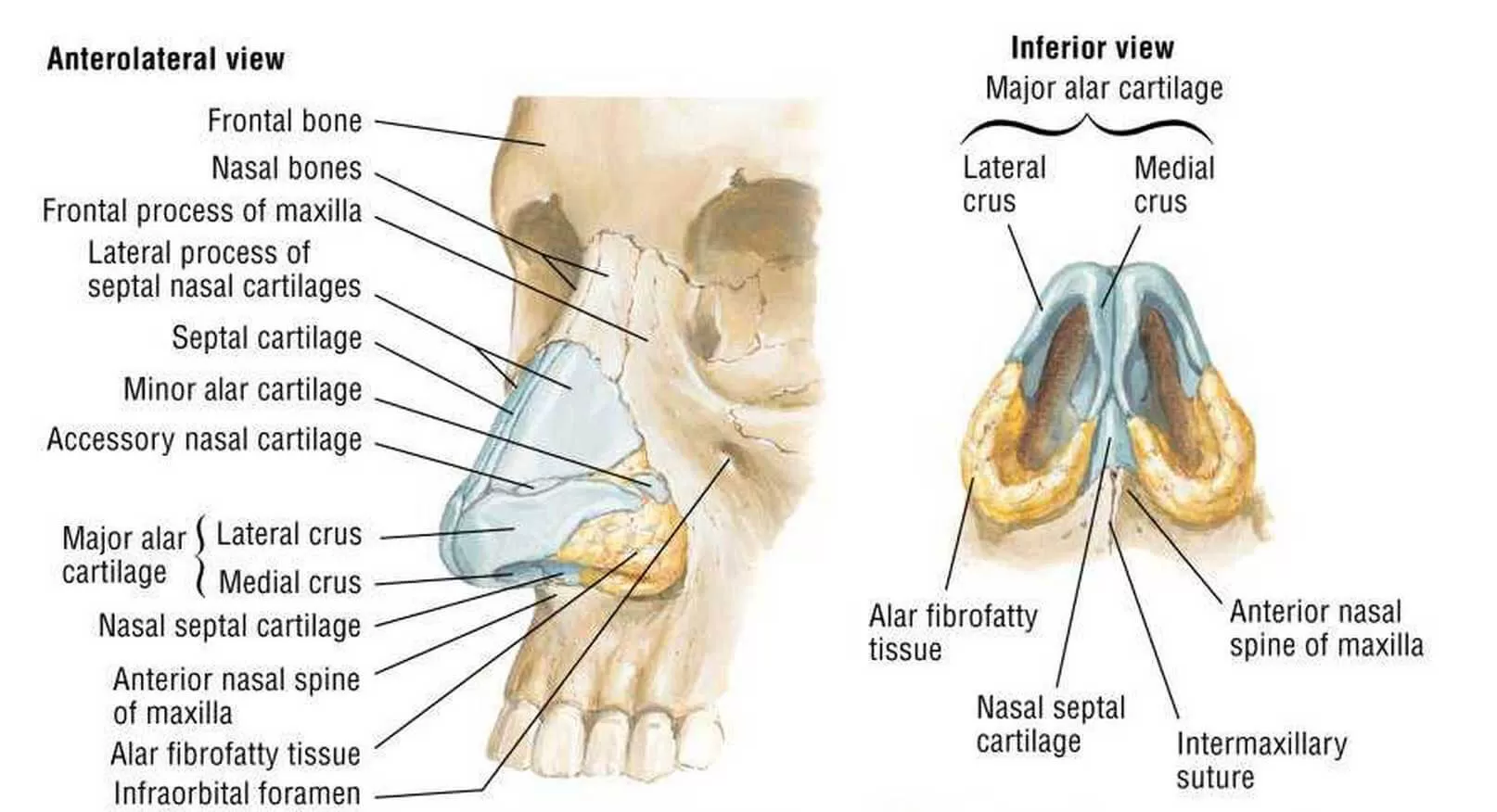Rhinoseptoplasty (Functional & Aesthetic Nasal Surgery)
Rhinoseptoplasty is a surgical procedure that combines septoplasty (to correct a deviated nasal septum) and rhinoplasty (to alter the external appearance of the nose), aimed at improving both nasal function and aesthetics.
Relevant Anatomy
The procedure involves the nasal bones, upper and lower lateral cartilages, septal cartilage, and nasal mucosa. Familiarity with nasal valve area, turbinates, and septal support structures is essential.


1. Instruments and Equipment Checklist
Basic ENT Tray (Sterile)
- Scalpel blades (No. 15, 11)
- Metzenbaum scissors
- Adson and DeBakey forceps
- Needle holders
- Nasal speculum (Vienna or Killian)
- Nasal rasps
- Freer elevator
- Nasal scissors (tenotomy, curved)
- Suction (Frazier tip)
- Electrocautery (bovie)
Specialised Instruments
- Osteotomes (2 mm, 3 mm)
- Septal elevators (Cottle, Joseph)
- Cartilage scissors
- Bone-cutting forceps (Kerrison or Takahashi)
- Alar retractor
- Nasal splints and silicone sheets
Sutures
- 4-0 and 5-0 PDS or Vicryl for internal closure
- 5-0 or 6-0 nylon for skin (if external rhinoplasty)
Other Equipment
- Headlight or overhead OR light
- Facial drape with fenestration
- Sterile eye protection
- Gauze packing or Doyle splints
- Sterile dressing packs
Fluids and Medications
- Antibiotics: IV cefazolin pre-op per ENT protocol
- Topical vasoconstrictor: Oxymetazoline or adrenaline-soaked pledgets
- Local anaesthetic: Lidocaine with epinephrine for field block
- Saline: For irrigation and debridement
2. Before Knife to Skin
- Confirm nasal splints, septal supports, and sutures are available
- Initial surgical count (swabs, instruments, sharps)
- Ensure bovie, suction, and headlight are functional
- Prep nasal cavity with vasoconstrictor-soaked gauze
- Confirm patient consent for both septal and aesthetic components
Prepping and Draping
- Cleanse face with povidone-iodine or chlorhexidine
- Drape with a head and neck ENT drape or facial split drape
- Ensure eyes are protected and secure with ointment or shields
3. Intraoperative Stages
- Approach: Open or closed rhinoplasty approach; incision at columella if open.
- Septoplasty: Elevate mucoperichondrial flaps, resect or reposition septal cartilage.
- Nasal Reshaping: Osteotomies and cartilage grafting or removal to reshape the dorsum and tip.
- Stabilisation: Placement of internal sutures and splints as needed.
- Closure: Layered closure of incisions, application of nasal dressing and external splint.
4. Post-Op Tasks
- Final count and documentation of all instruments
- Apply nasal splints, gauze bolster, and external support if required
- Clean the surgical site and face gently
- Remove soiled drapes and assist extubation if needed
- Document implant use and any complications
- Handover to PACU nurse with full intraoperative report